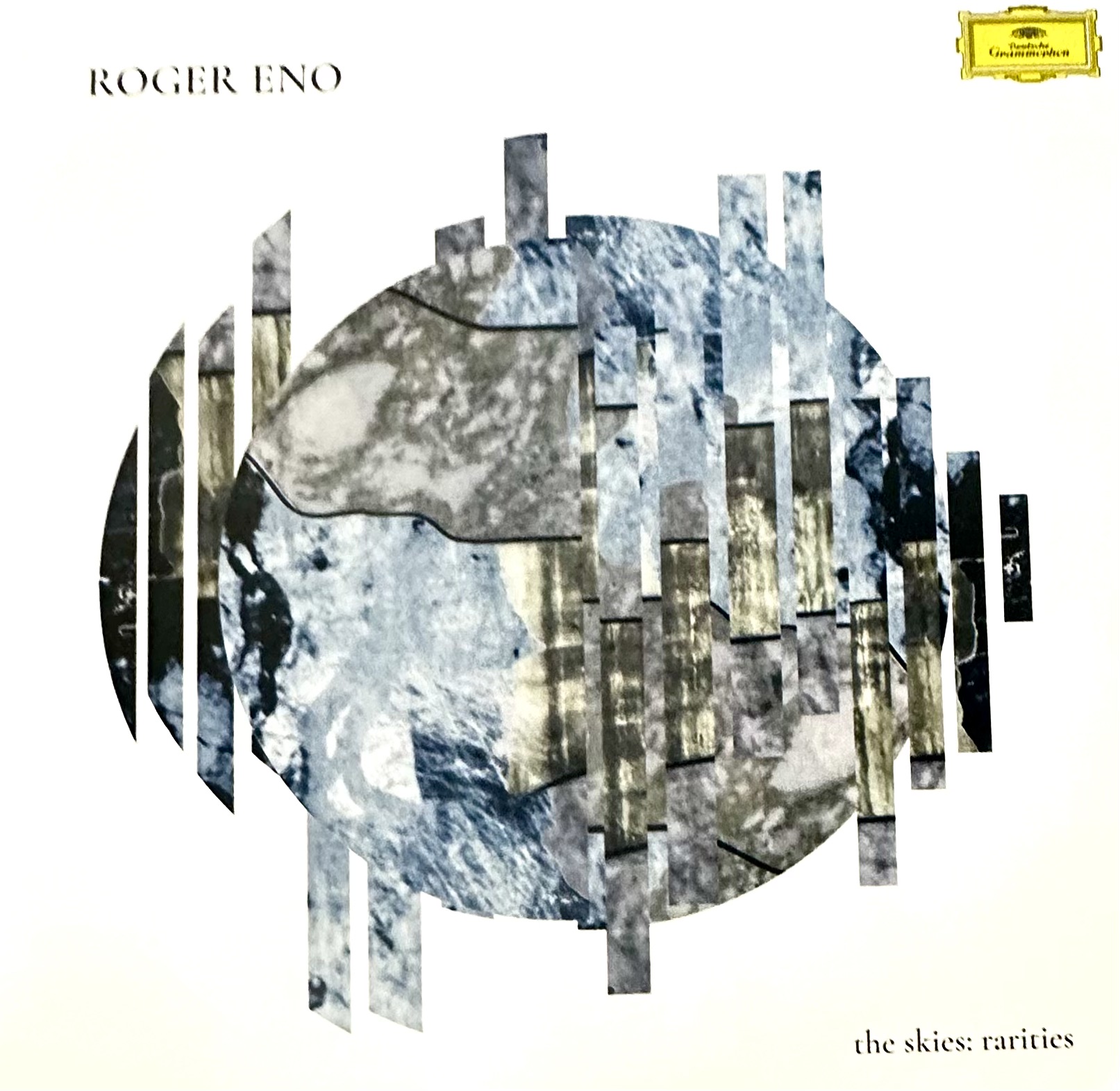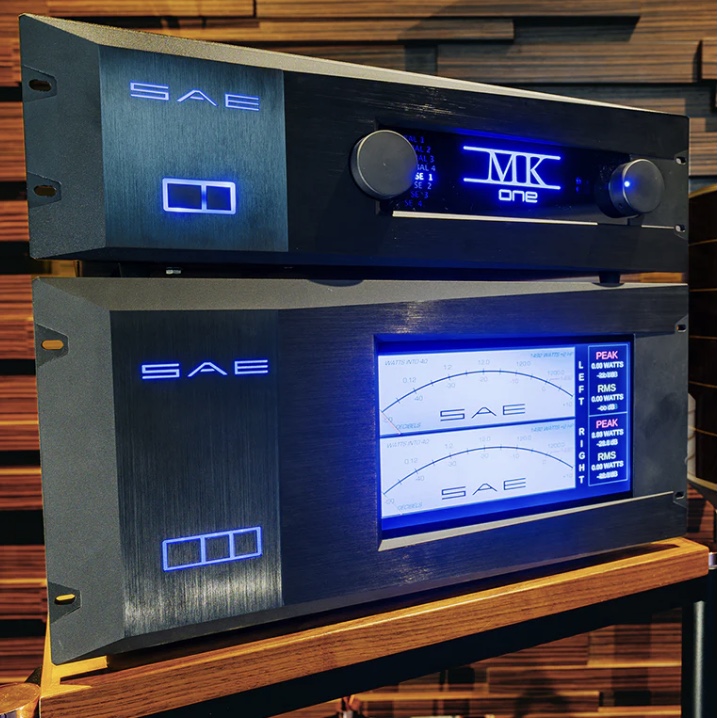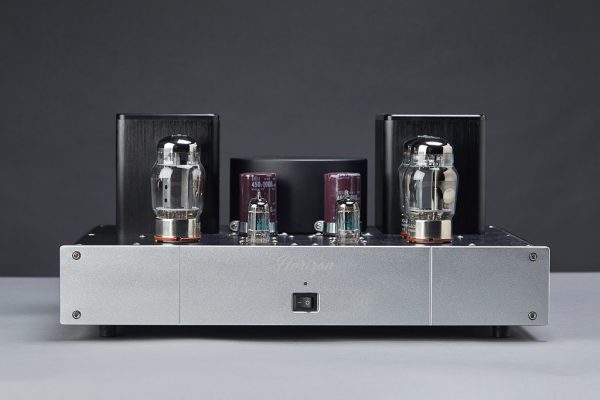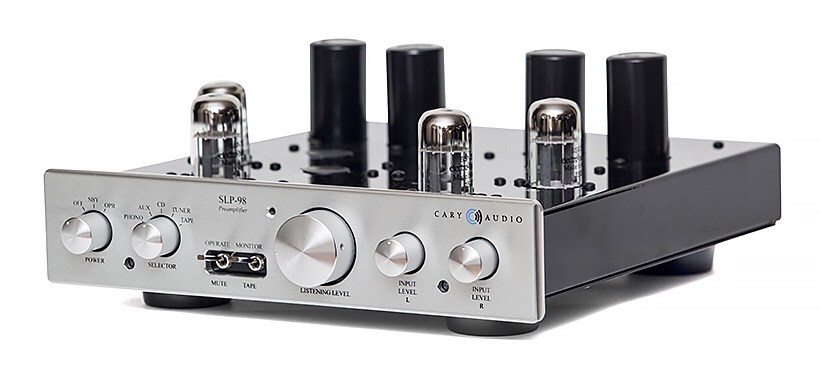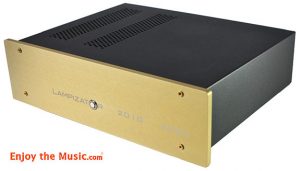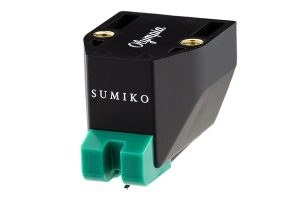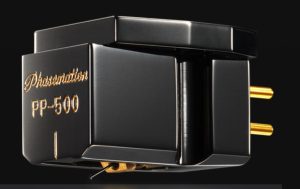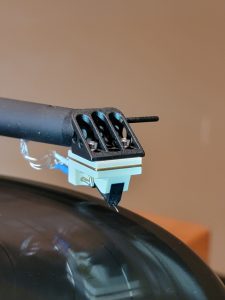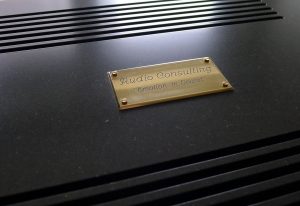In 2019 I reviewed the Paradox Pulse Signature 70 MC Phono Preamp. I was so engrossed with it that I actually bought one along with the Paradox Pulse Guard R SMR Cartridge that I also reviewed around the same time.
In the subsequent two years since my purchase Terence Robinson has upgraded both pieces with considerable improvement to both. If you go back and scan my very positive reviews of both items (HERE for the cartridge and HERE for the phono) you can see that improving them from that point would have been quite the hat trick.
This year, when Terence offered me the upgrades I jumped at the chance to pay for them and see just how much improvement there could possibly be from the original state that I first reviewed them in. Well we are about to chat about that very thing, so stay with me.
SPECS and SUCH
Paradox Pulse Phono 70 Signature Preamp
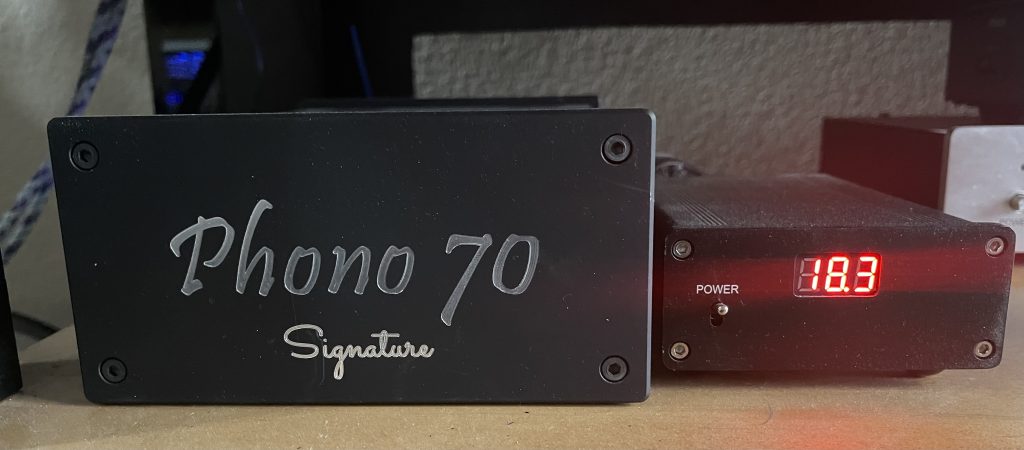
In my review two years ago I included Terence's own words about the Signature 70:
"The Phono 70 is 70dB of ultra quite JFET passive RIAA gain to allow your MC cartridge to reach it's fullest potential.
With infinite external loading ability you will be able to get the precise load match for your system and moving coil cartridge no matter how often you change something.
I have been listening to and building the finest electronics available and I am claiming that there is NO Phono better sounding period.
I am not saying at a price point, just period.
Try it! if you don't agree with us this product also caries our 30 day money back guarantee."
As I stated in that review:
"That is one serious guarantee from Terence, and I can say that in my dealings with him thus far he seems to be a man of his word."
The above statement applies specifically to the standard Phono 70, which retails for $2500. My unit is the Phono 70 Signature, which differed in the following aspects:
- Proprietary wire.
- The tantalum resistors in the signal path for each channel of the base 70 are 1/2-watt Audio Note units at a cost of roughly $9 each. The silver tantalum resistors for the 70 Signature are 2-watt Audio Note units that cost almost $60 each. That is a serious upgrade!
Throughout all of my listening I found the Phono 70 Signature to place itself as relatively invisible in my system. My review piece came with a number of sets of resistors and accompanying RCA plugs. Loads range from 100 to 680 ohms in the standard package. This is a very interesting approach, and worked very well in practice. Instead of DIP switches you can choose various loads, and using the RCA plugs and inputs, custom tailor the load to best match the cartridge you are using. New cartridge, different load? No problem. Just grab the appropriate resistors and plug them in. For more in depth explanation, the unit comes with an outboard power supply and umbilical cable, external power supply, JFET low noise amplification, and passive RIAA with only one 2-watt Audio Note tantalum resistor per channel in the signal path. While the standard Phono 7 uses Cardas phono wire for all signal and power supply paths, the Signature 70 uses Paradox's proprietary wiring in the signal path. For more info go to the website. Down and dirty, quick and concise explanations just like I prefer them. Some might prefer more info than the website provides, but I am relatively sure Terence will answer any and all requests for more info.
The Phono 70 Signature just let the music come through unabated without coloration and interference. I found myself pulling out vinyl that I had not listened to in years to run it through the Phono 70 looking for some kind of weak spot or flaw. None seemed to emerge.
I can think of few things that are more difficult than to describe how the absence of something makes a listening experience better. How do you quantify something that is not there? Wow that really sounded excellently not there! Is that even possible? Suffice it to say, once I put the Phono 70 Signature in my system there was an even blacker background with vinyl. Perhaps saying that I went from the emptiness of deep black space into the ultimate void of a black hole does the job, because that is the grandest and most complete way I can think of expressing the difference. No twinkle of far away stars, just an absolute and complete void!
If that sounds like the kind of thing you want in your vinyl world, then I suggest a look and listen to the Paradox Pulse Phono 70 Signature. It would be well worth the time to do so.
Pretty strong praise and I have not regretted for a single nano second purchasing the unit. It has operated flawlessly and provided amazingly dark backgrounds to my vinyl. One of the things that I truly appreciate is the somewhat compact size of both the phono stage and the separate power supply. Flexible and easy to place. Changing resistors is easy and still a system that works amazingly well when changing cartridges. There are no frills with this unit, just absolutely mind altering performance from a rather staid and mundane looking piece of kit.
So what do we get with the upgrade?
Well there is a new super Duelund silver bypass capacitor on each coupling capacitor (six total), and six half watt silver tantalum Audio Note resistors that have been placed into the 70 Signature and send power to the JFETs represent a rather significant upgrade in the existing parts, and they are not cheap. As a further example the Signature 70 uses Marigo Labs solder, which has gold and silver in it and costs $160 a spool. These are some of the best components available today.
Is it worth the upgrade? You bet it is. The best analogy I can give for how much of difference there is the discovery of a new paint technology that applied to cars makes a regular black finish seem almost colorful. The color is called Mouso Black, and claims to be the darkest color ever produced. The paint simply swallows up all light, and therefore color and is almost painful to look at on a larger scale such as a car. (Yes it has been done and I have seen it). This is the singular best illustration of the difference between the standard (hardly standard at all) Signature 70 and the Signature 70 with the aforementioned upgrades now available. The difference was not as astonishing as comparative listening I did with my original Signature 70 standard compared to three other phono preamps I had. It was definitely the blackest background I had experienced. With the upgrades we simply moved into that last bit of completely dark background and it was more noticeable than I anticipated. We are now talking black hole darkness and nothing escaping but the music and any surface noise that might be on the source material.
The Phono 30 is $1500, which is 30dB of gain with all loading options (way better sounding than any SUT) still available.
The Phono 40 is 40dB with Passive RIAA (the same as the Phono 70) for those that just want MM, and yes these two other products (30 and 40) are the very same circuit board and parts as the 70 just those individual units are not combined to make the 70. If you want Signature versions of the 30 and 40 that is available at additional cost.
The Phono 70 Signature has also had many improvements and is now $3500, but that is still an introductory price and will go up $500 in the near future. Worth it you ask? Absolutely! I have yet to come across phono preamp that can touch it in this price range. I am sure there are some very high priced phono stages that would outpace it, but only by the slightest margins if any at all. (You can search other sources for other reviews that came after mine that totally support my findings).
According to Terence there is a Phono 70 Signature Mono coming, three chassis, their own power supply and mono boards with everything we know on them. Introductory price will be $6k, but will go up a further $2k when intro is over. I actually have all the parts to build them, but have not had the time. If that is of interest to you keep an eye out for that product, or contact Terence and inquire directly.
If you are looking for a great phono preamp with a lot of flexibility, great build quality and performance that could easily cost twice as much or even more, this is the unit for you. Not much else to say other than that.
Paradox Pulse Guard R SMR to RSG Upgrade
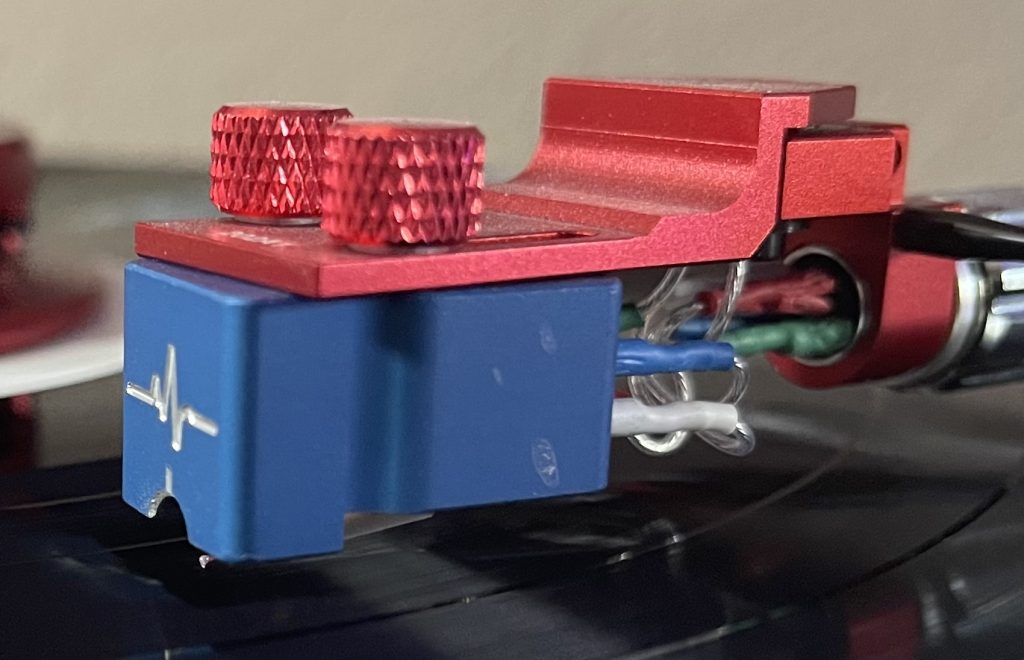
So what do we get in the new upgrade for this fine little cartridge? In the original version the SMR stood for Sapphire cantilever, Micro Ridge stylus. The new version is the R RGS which now means my cartridge has a Ruby cantilever and a Gyger S stylus, which some argue is the best you can find for phono playback. This has pushed the price of the cartridge up to $1400. I cannot express what a value that is. To put it in perspective I replaced my Koetsu Urushi Vermillion with it, and after a month of listening sold the Koetsu.
The base cartridge is $700 and is called the Guard R. It is a rebodied body and assembly using a new Denon 103R cartridge/motor. The Guard R SMR cartridge I reviewed and subsequently purchased was $1100. That in and of itself is an astonishing bargain at that price. The Guard R RGS, which is the subject of this update, is $1400. Anybody can have their 103R cartridge retipped with the RGS. That will set you back $700 from the retipper.
The reason the current model is more expensive is simple economics. Everything is more expensive now but what is truly interesting and surprising is that it hasn't gone up more.
I noticed an immediate improvement the minute I installed it and began listening.
I have been in a mode a of late to listen to a lot of older jazz vinyl, and had just received a spate of new albums not the least of which were replacement for totally worn out albums by Louis Armstrong and Ella Fitzgerald, Harry Belafonte, and others. Perfect for testing the new cartridge and Signature 70 upgrades.
LISTENING
From Harry Belafonte's Belafonte Sings the Blues (Living Stereo RCA Victor LSP-1972), arguably one of his very best recordings, comes the track "Losing Hand." Recorded over a couple of sessions in New York and Los Angeles, this song showcases Harry's extremely smooth, controlled and evocative emotional voice that is both powerful and silky sweet. There is also a very raunchy guitar (somewhat rare in 1958) that jumps off the record. Not an easy thing to track correctly, but the Pulse Guard R RGS handled it without issue, and delivered all the fine nuance of every aspect of the recording. The drums were sharp, clear, and had the right amount of decay. It was especially noticeable with the sticks on the cymbals as they shimmered then faded away just as they do live. The guitar just explodes out of the totally black background and sets your nerves on edge. The saxophone solo is guttural and painful in the delivery. Exactly what the song calls for; everything was separated and place throughout the sound stage perfectly. The breathing is all there, along with those quite distinguishable clicks of the valves. Numerous times the piano was coming from four feet to the left and three feet back from the left speaker. That spread is a new phenomenon since the addition of both upgraded components. The soundstaging has always been good, but it went to a new and better level with the upgrades. Basically that was a very big improvement that I really wasn't expecting. I could not be happier with the improvements. As a side note; the album is a must have for blues and jazz fans.
Ella Fitzgerald and Louis Armstrong have done a number of projects together, but the Ella & Louis album (Groove Replica - 77014) is just stellar. The song "They Can't Take That Away From Me" is one of the best versions of the song I have heard. I used to listen to this music as a youngster on my parents HiFi system all the time. I was told I had to listen to some of their music before I could listen to my Beatles and other Mersey Beat groups on the HiFi. It was their way of educating me to music that predated the British Invasion. I find myself now drawn back to that music more than others these days.
On this particular track there is a wonderful blend of these two distinctive and very different voices. The recording is a bit older, and yet the combo of the cartridge and phono stage brought out out some really nice nuances that I did not catch before. Mainly the decay of the drums and cymbals and voices. All of them seemed to linger a bit longer before disappearing completely. Louis' distinctive voice is rendered a little more gently than prior. He had great control over the gravel that permeated his voice. With less background and a clearer path to the listener I found his voice more relaxing and melodic on this combo of phono and cartridge. He just seemed to be a bit smoother and creamier and less gravelly on his vocals.
Oscar Peterson's "Moten Swing" from the legendary Night Train album (Waxtime Records 771834. Remastered on 180 gm vinyl) recorded in December 1962 with Ray Brown on bass and Ed Thigpen on drums. This was Oscar's main lineup for a number of years. On this album the recording is crisp, clean, and lets each musician shine through without being overridden by the other two. Ed's drums vary in intensity and pace to match changes in the basic theme of the music. Ray Brown's bass rides the rhythmic beat laid down by Ed, and provides the perfect foundation for Oscar's percussive attack. On the keys his touch goes from gently flicking the keys to an outright assault on them. As the tempo marches upward and the intensity gains the percussive nature of the key strikes become something that you not only hear, but also begin to feel in your seat. Just as quickly as it ramps up Oscar brings it back down a notch, and the more delicate approach on the keys brings the whole tune to smooth ending. All the details are there in a glorious mix. Again the percussive nature of the keys really comes through in both the aggressive upswing, but also some of the softer playing in the tune. The detail that the two components present is astonishing and incredibly captivating. Then again, that could be said of the entire recording. I just randomly selected "Moten Swing" to highlight.
As stated in my original review, these two components are standard setting for the price range. That still very much holds true, but for a minor increase in price the performance level of both can easily compete with components twice, and in some instances, three times the price. Turning loose of my last Koetsu is no indictment against one of the most legendary cartridges on the planet, but rather a testament of just how much you get from newer products that defy pricing. I cannot overstate what a true bargain both are. Your friends will be astonished if you play them a few selections of your favorite music and then tell them the cost. One of my dearest friends just upgraded his stereo to the stratosphere with new turntable/cartridge, amps, preamp and phono cartridge. The retail value of his upgrades is roughly $150,000. There is no denying the majesty of his system, and the sound simply cannot get much better. But my system with these two upgrades is 9.5/10ths of what he has moved to, for a whole lot less. I will be sticking with my setup and the upgraded Pulse Guard R RGS and the upgraded Signature 70 Phono! Definitely check them both out. You will not be sorry. Paradox Pulse also makes amplifiers, cables, and turntables.
Pulse Guard R RGS Cartridge
Retail: $1400
Pulse Signature 70 Phonostage
Retail: $3500
Paradox Pulse
760.245.8435




